When my cat adopted me last year, the last thing on my mind was checking to make sure my houseplants were safe for pets. Then I accidentally came across an article on pet-safe greenery and the light bulb came on: time to make sure the plants are up to code! This post is dedicated to all you cat and dog owners out there. Keep in mind that today’s featured plants are safe for cats and dogs, but even non-toxic plants may have less-than-ideal effects if ingested. In fact, it’s never a bad idea to check with your local nursery or vet for verification that a plant is in fact pet-safe, and I’ve found the ASPCA website to be incredibly helpful. Here are 6 unique plant finds that will help you create a stylish, pet-friendly interior…
Spider Plant
Let’s start with some foliage that demands to be noticed. The spider plant has long, spiky leaves that create a dramatic effect without overpowering the room. [from Inscribd]
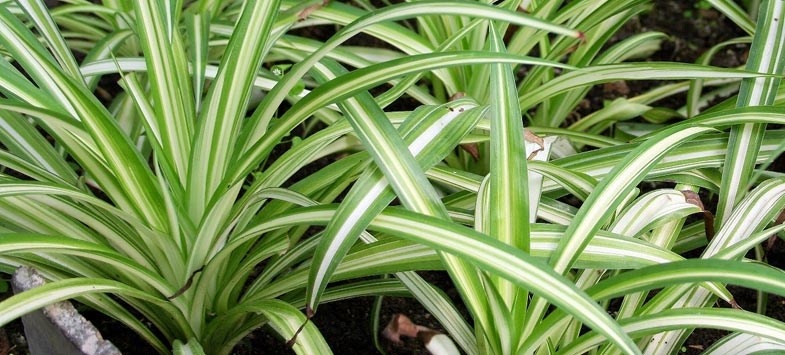
Below we see a spider plant resting on a fireplace mantel. In fact, this plant’s cascading tendencies and ability to produce dangling “plantlets” make it ideal for hanging baskets. [photo by Holly Marder via Houzz]
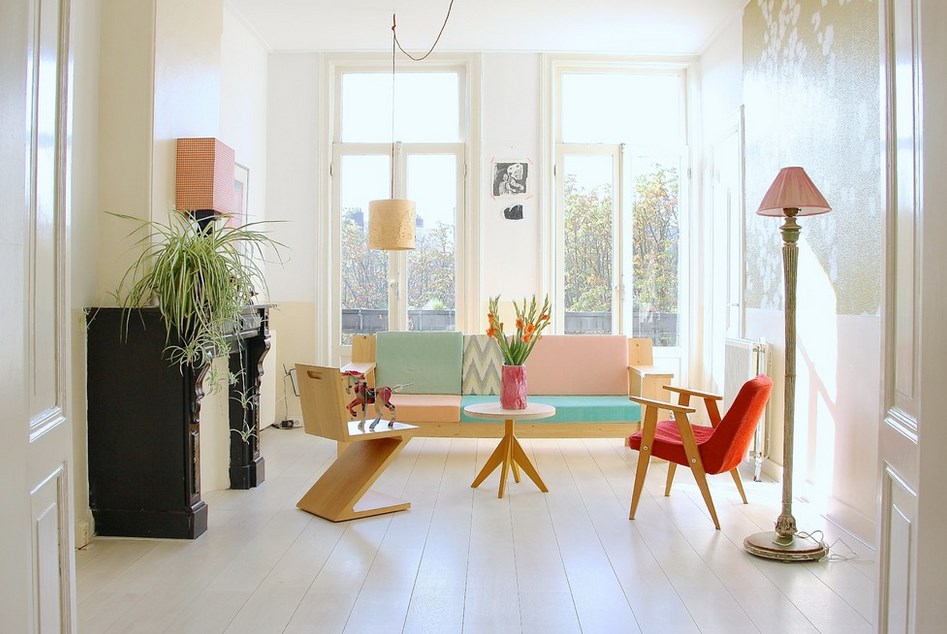
Spider plants thrive when placed next to a window. Not to mention, this plant should dry out between waterings, which gives you plenty of time to remember to hydrate it! [from A Beautiful Mess]
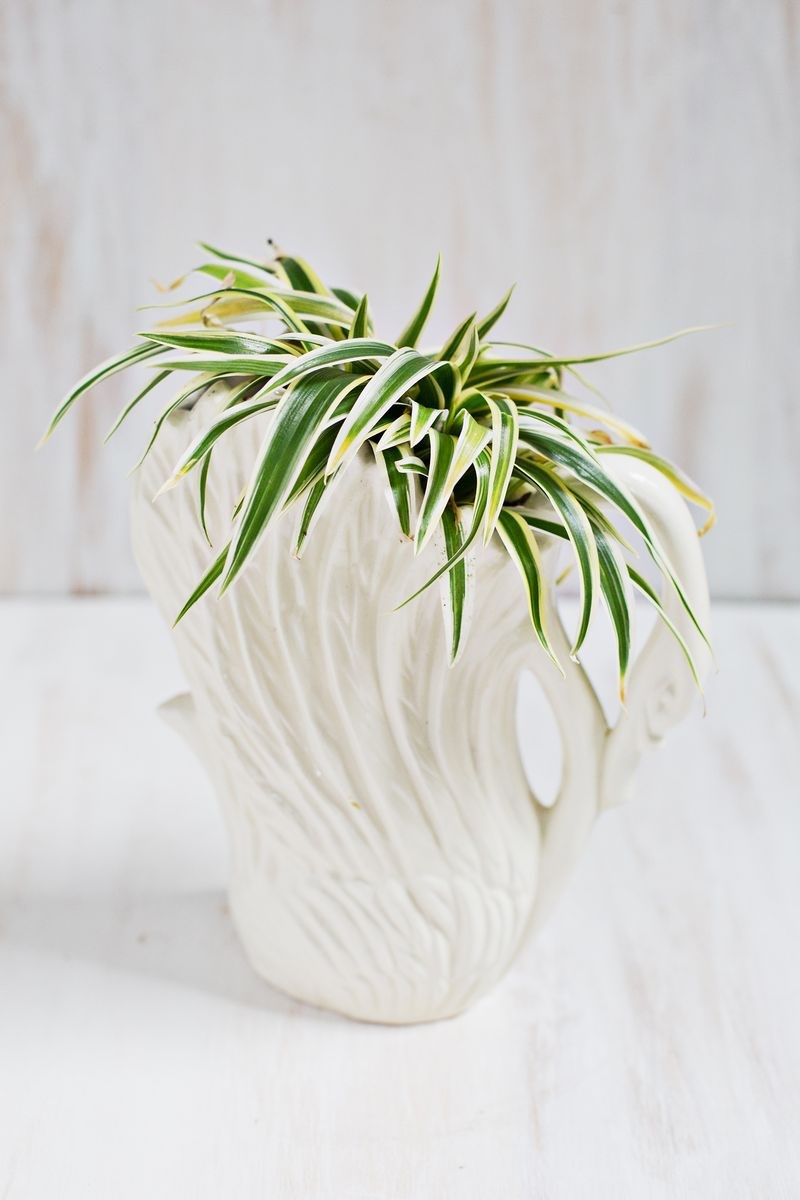
Lemon Button Fern
With its small arching stems and button-like foliage, this plant is the perfect accent piece for a shelf or tabletop. In fact, it often levels out at a height of about one foot tall. [from Exotic Angel Plants]
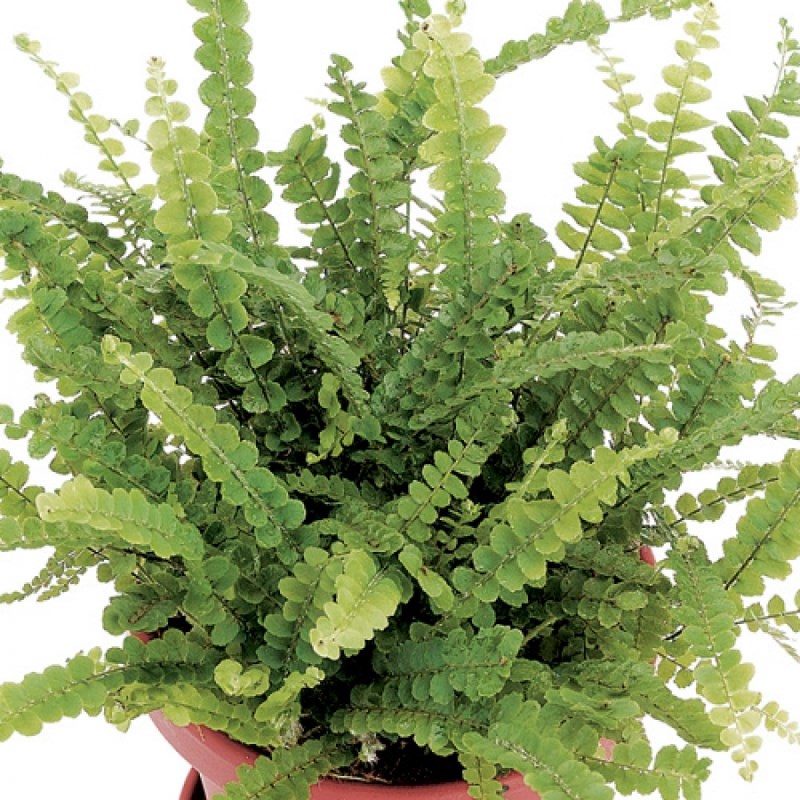
The lemon button fern’s curved form and delicate leaves also make it ideal for hanging baskets. At the same time, a simple terracotta pot is the perfect receptacle for this dainty yet eye-catching plant. [from Blue Pumilio]
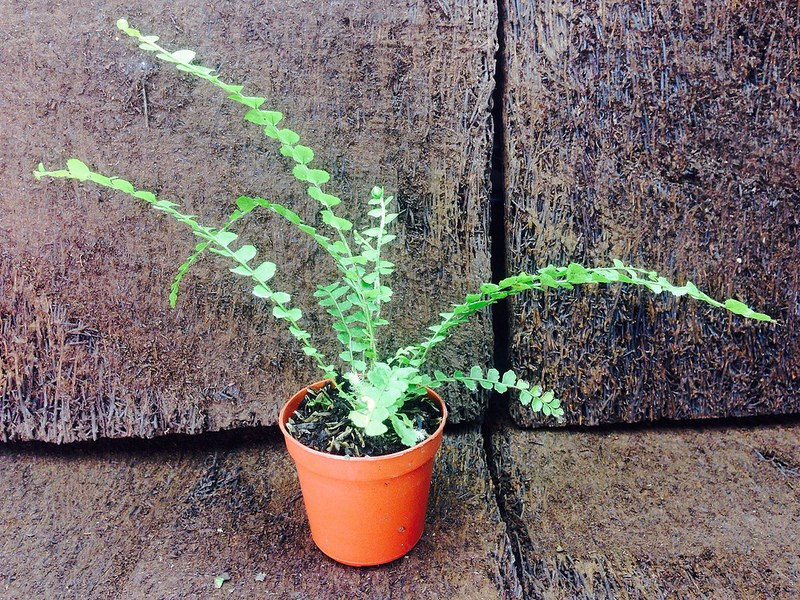
Low to medium light is ideal, and it’s best to keep the soil moist without over-saturating the plant. [from Bianchi-Davis Greenhouses]

Areca Palm
I’ve been dying to add some tropical greenery to my interior, but it seems that more often than not, a quick research attempt reveals that my plant of choice is toxic to cats and dogs. I was thrilled to discover that the areca palm is a safe option! Here’s a whole slew of them, shown in an image from Fox Hill Nursery:

This is the kind of plant you can display with pride in a big pot (such as a metallic planter–my personal favorite for a retro modern look). Talk about an instant focal point to the room! [from Feels Like Home 2 Me]
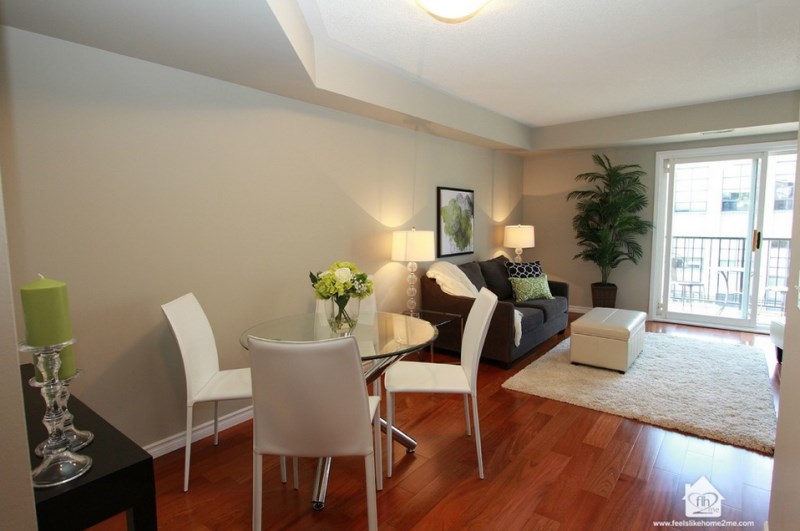
Known for its air-purifying effects, the areca palm is fairly easy to care for. It’s important not to over-water the plant, but it’s a good idea to hydrate it when the soil below the surface begins to feel dry. In terms of lighting, a helpful SFGate article offered the great suggestion of allowing your areca palm to gradually acclimate to indoor lighting by first placing it outside in a part-shade area. After a few weeks, bring it inside to its permanent bright location! [from Nimicoco]
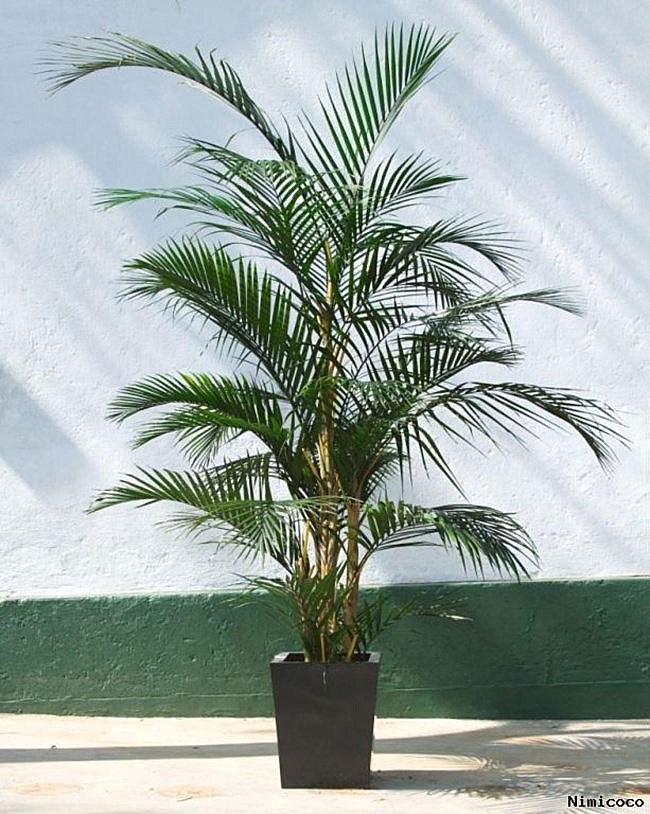
Baby Rubber Plant
Looking for a plant that works well in containers and glistens with style? The baby rubber plant is shiny and bright, yet low-maintenance. Yes, the waxy round leaves give it a special sheen and a shape that’s ideal for the pot of your choice. The photo below appears in an amazing post from A Beautiful Mess, which showcases a collection of unique houseplants that are non-toxic. [from A Beautiful Mess]
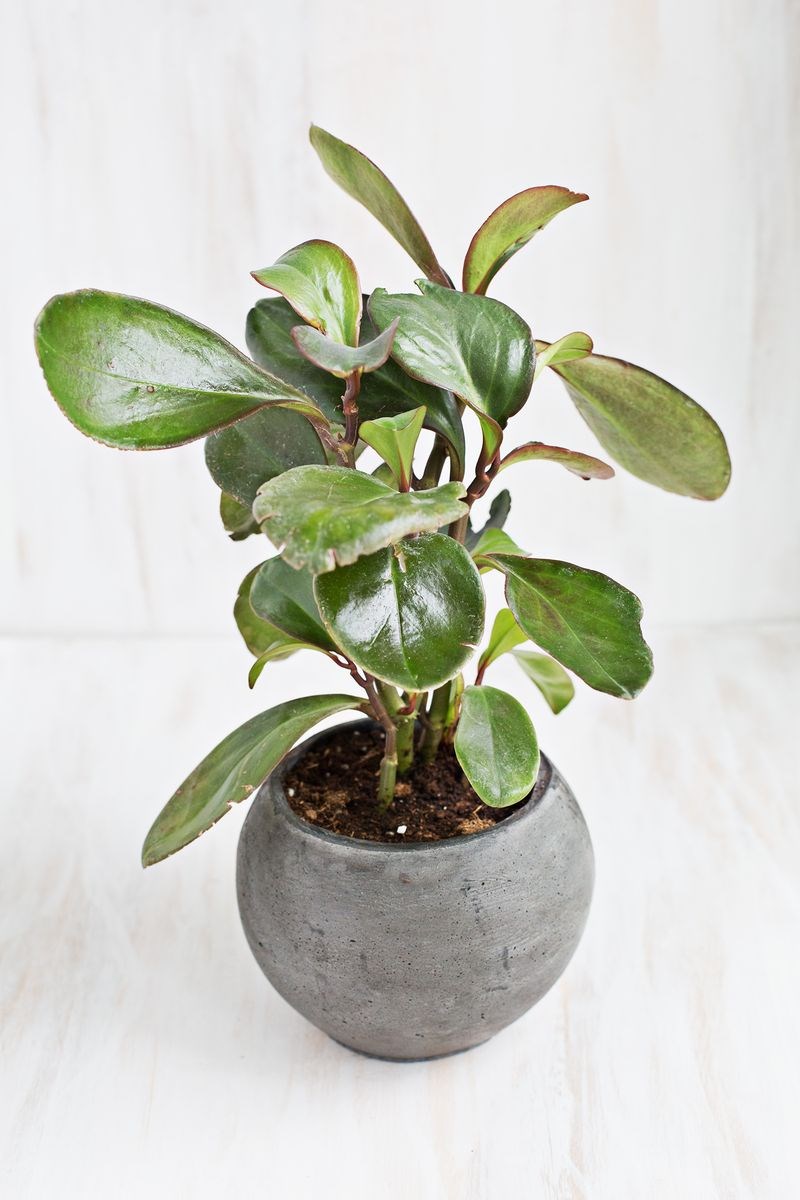
Baby rubber plants love bright indirect light, and it’s easy to overwater them, so resist the temptation. In fact, allowing the soil to dry out almost entirely between waterings is a good idea for this no-fuss plant. [from Plants Rescue]
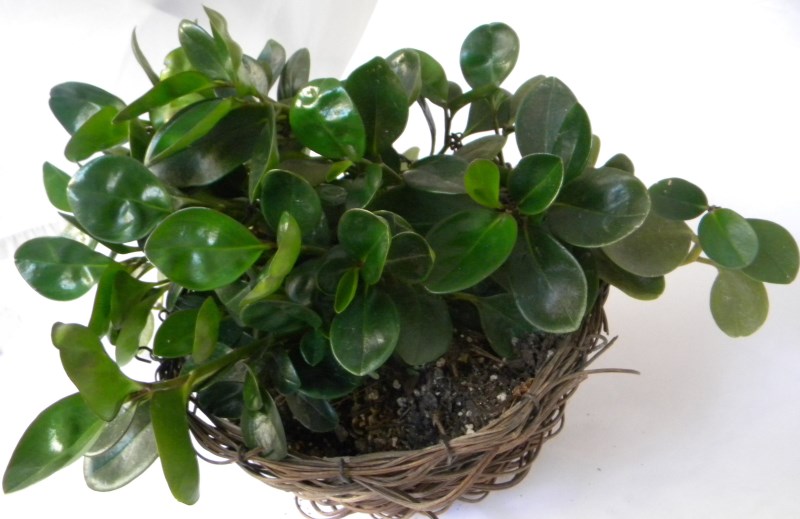
Ponytail Palm
A wide base, a striking trunk and a full display of long leaves gives the aptly named ponytail palm a sculptural look. [from My City Plants]
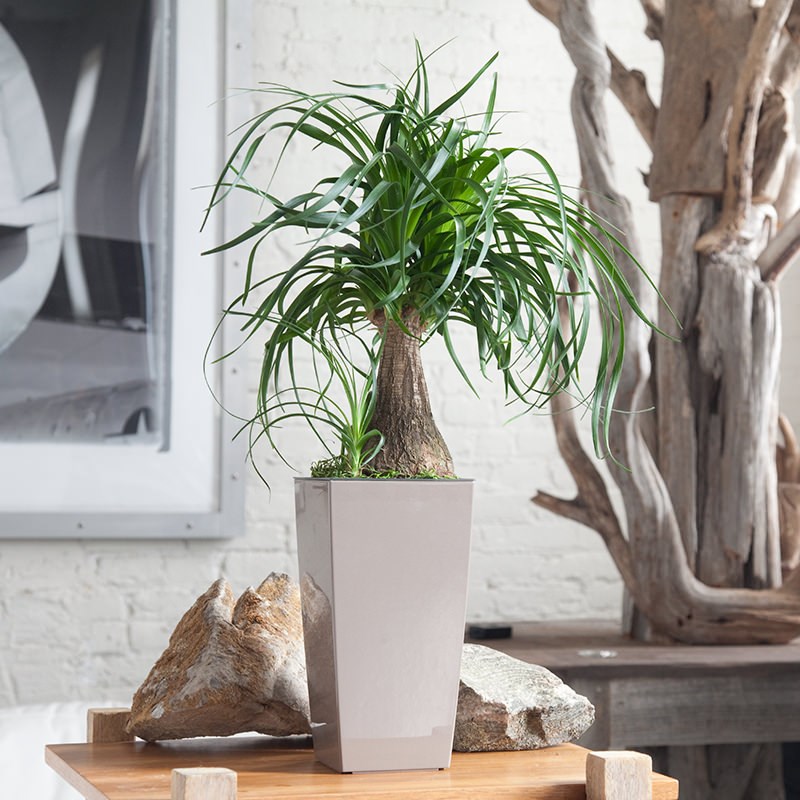
It’s hard to imagine a plant more dramatic than the ponytail palm. Maybe that’s why it often takes center stage in modern living rooms…[from WXY Studio]

Bright light works best for this plant, as does a relaxed watering schedule of once every one or two weeks. Display it alone, or go for a tropical look with a row of ponytail palms that creates a resort-style feel. [from PB Builders]
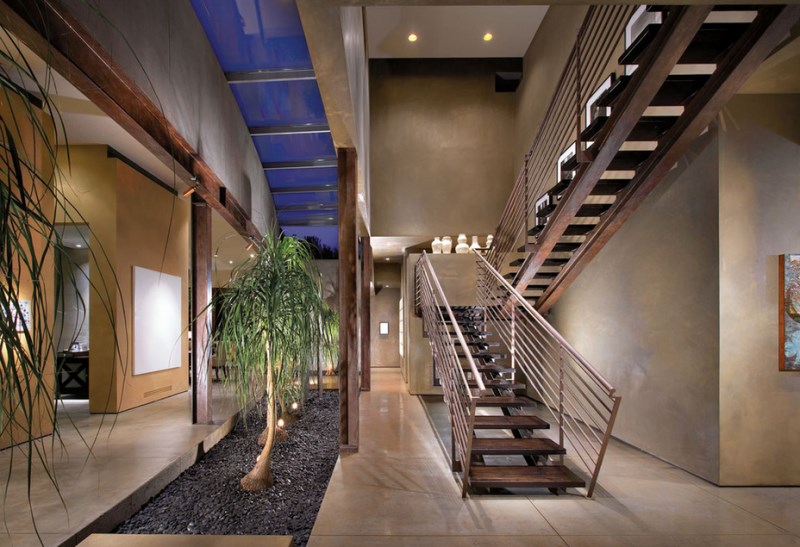
Prayer Plant
Last but not least, we have the prayer plant, which grabs the attention with intricate leaves that boast a variety of green shades, as well as pink detailing. Once again, this plant photo comes to us from A Beautiful Mess via a post that is filled with interesting houseplant selection and display options..
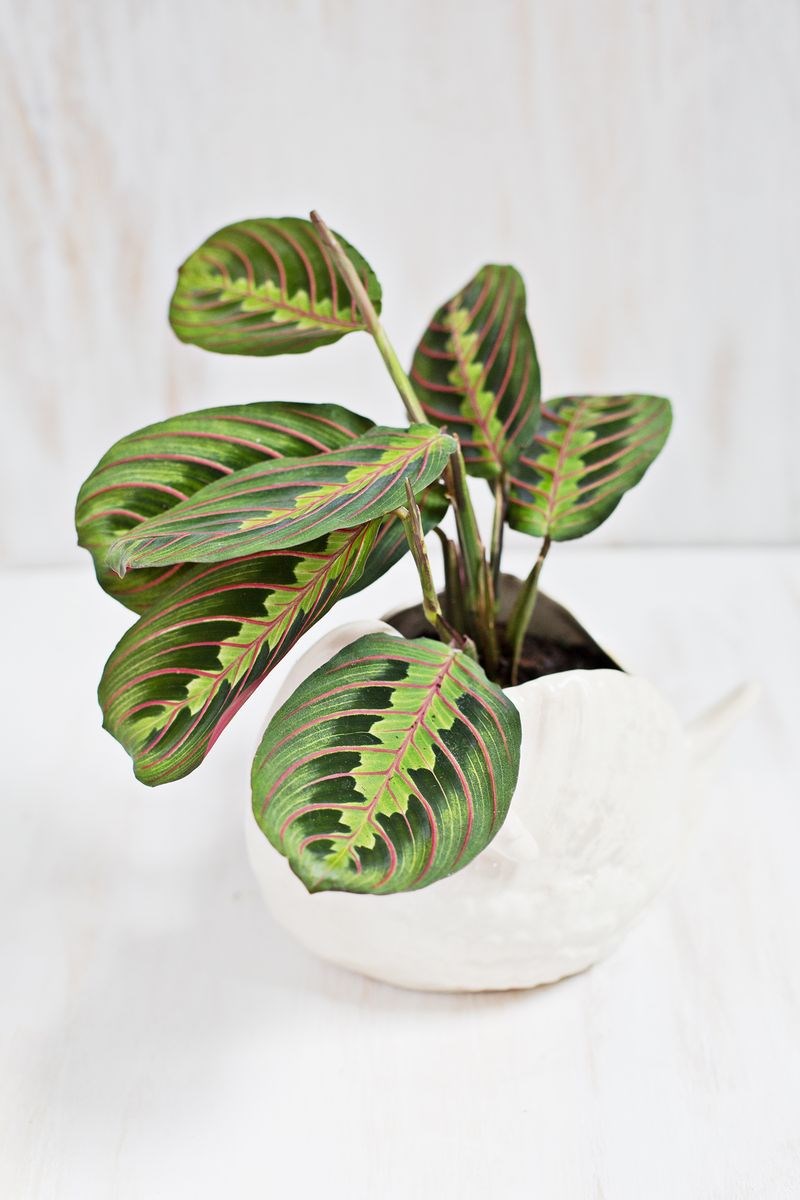
This plant does just fine in medium lighting, and it’s important to keep the soil moist but not too wet. It’s also a good idea to avoid direct light, as it will cause the leaves to fade. I found this post from Growing Wild Seeds to be extremely helpful in terms of prayer plant care. [from Growing Wild Seeds]
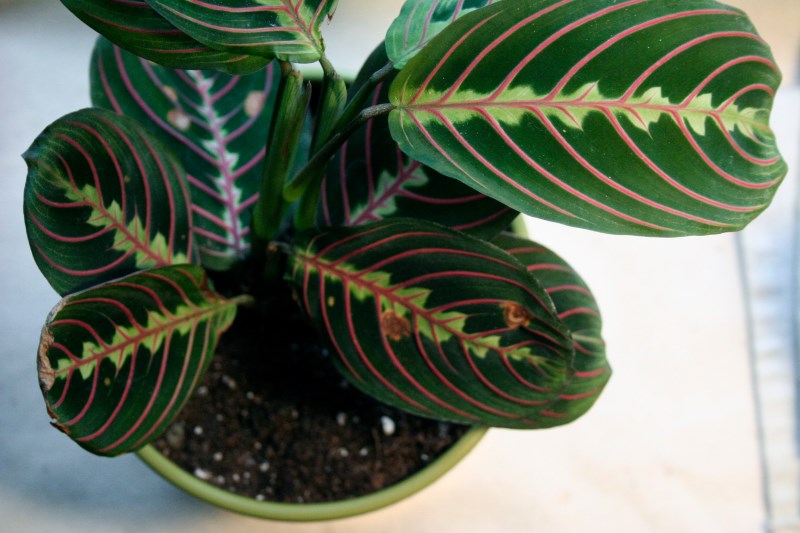
Trying to decide how to display your prayer plant? Just make sure whichever pot you choose doesn’t detract from the plant’s unforgettable leaves. Sometimes simple is best! [from Gardening Know How]
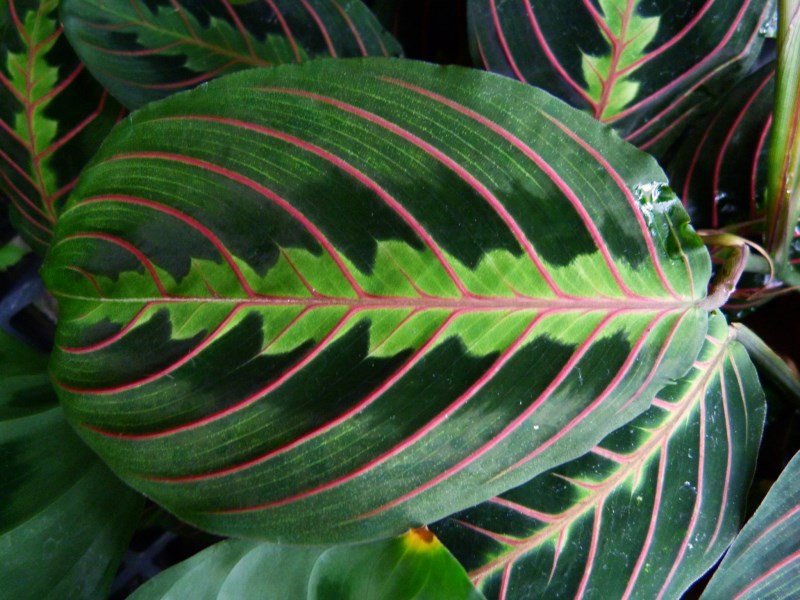
Thanks for joining me on my quest to bring cat-safe plants home. I’ll post more when I’ve made my final selections!












